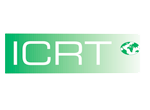Strategy
The Clear 2.0 project has accompanied consumers through all the stages leading to the purchase and the correct efficient use of domestic renewable and low-carbon energy technologies. It also focused as well on changing behavior and optimization of existing installations.
The main needs of a home, including heating/cooling and electricity production (including storage and monitoring systems) were addressed through a consumer-centric approach. The aim was to change behavior and form collective consumer groups to support the purchase of renewable energy systems such as photovoltaic installations, batteries, pellet stoves and heat pumps for heating and cooling.
The four major barriers (awareness, behavior, stability of legislation and price) to the investment in RES were directly addressed with the aim to achieve a higher consumer engagement.
BEUC and the consumer organizations carried out advocacy work on relevant legislative developments in order to overcome existing barriers and facilitate consumers’ participation in the energy market. It distilled policy lessons to create a favorable and stable national and European policy framework for the benefit of all European consumers.
What did we do ?
- Got better understanding of consumers’ motivations and main triggers to change their behavior by conducting online interviews.
- Tested what makes consumers use energy more efficiently by monitoring a group of households, providing them with information and equipment.
- Helped consumers make better informed choices by assessing the performance of renewable systems and making this information accessible to more households through new online tools.
- Accompanied the consumer to buy cheaper and smarter through group purchases.
- Contributed to more ambitious national and EU energy policies where we advocated for easy and fast administrative and permit processes as well as for one stop shops providing consumers with information and personalized advice.
The technologies we covered were:
- Pellet stoves
- Heat pumps for cooling and heating
- Photovoltaic panels, inverters, and installations performance
- Domestic batteries
- Systems to improve self-consumption and energy efficiency
- Systems to monitor energy consumption

 Test Achats
Test Achats  Ocu
Ocu Deco
Deco Altroconsumo
Altroconsumo BEUC
BEUC dTest
dTest MIPOR
MIPOR ICRT
ICRT



